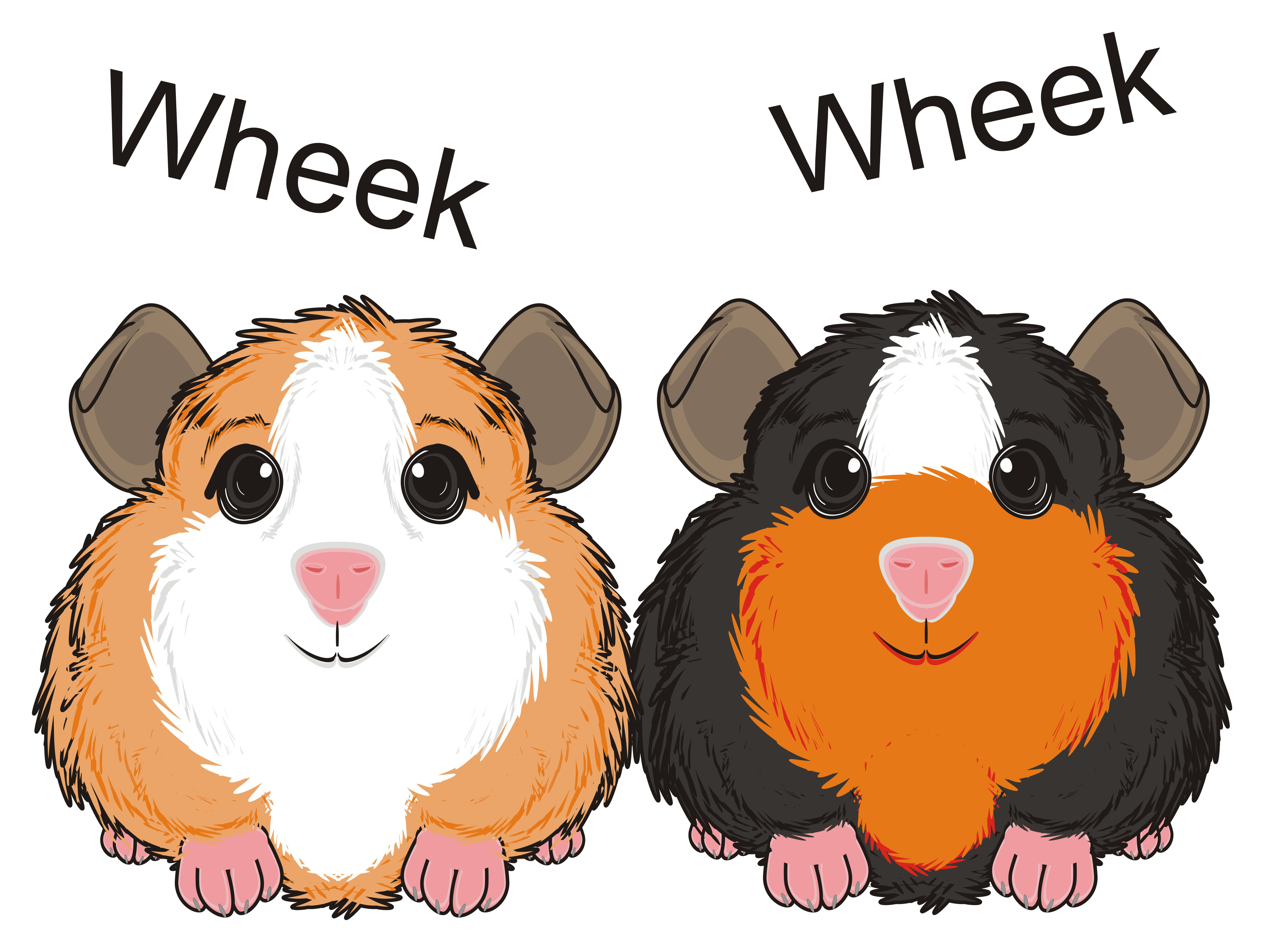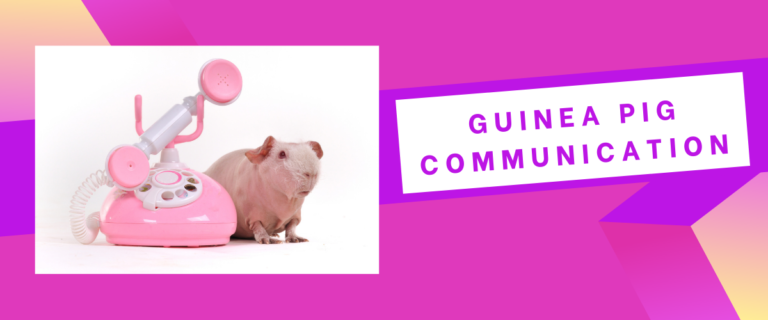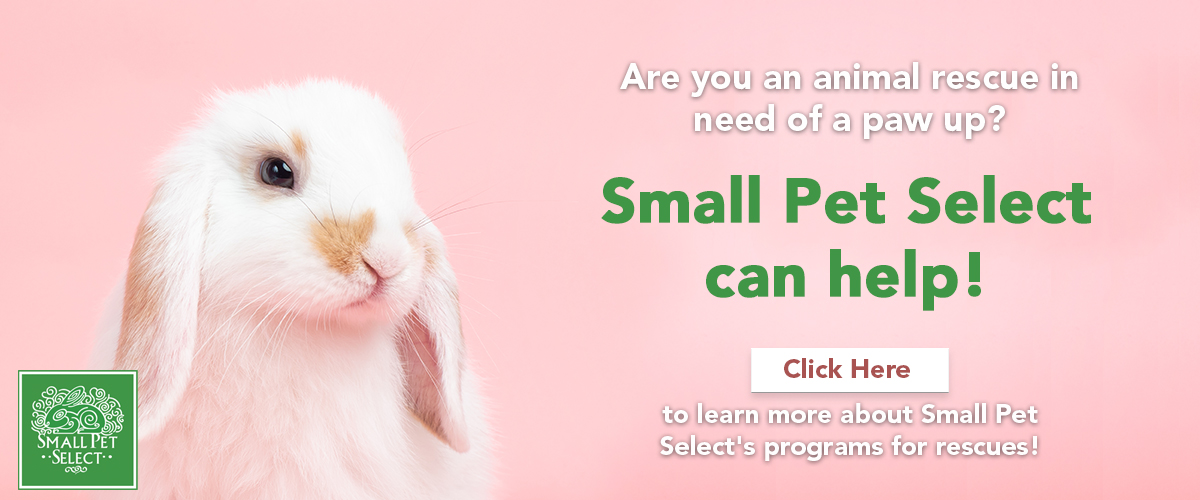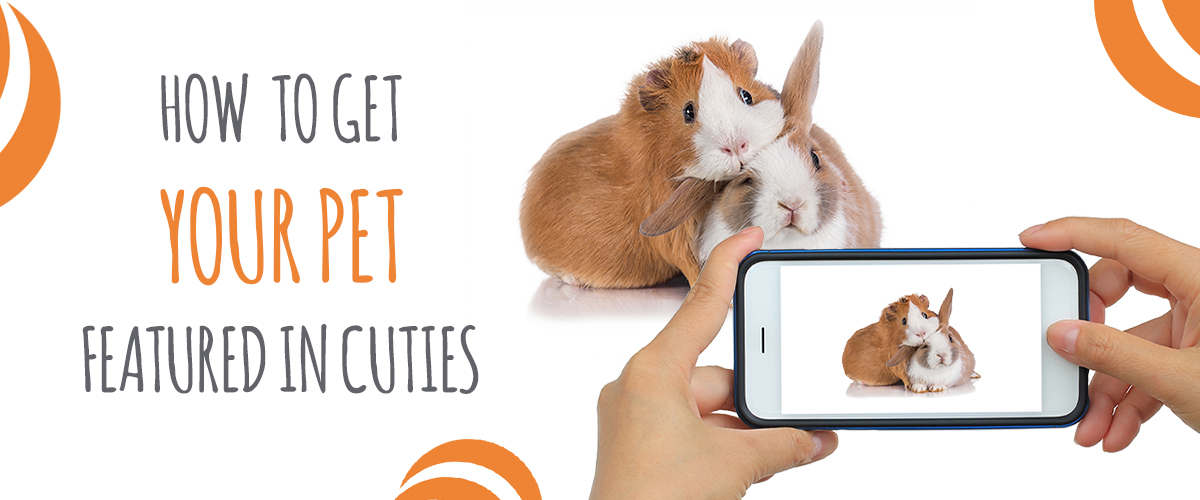With special thanks to Katherine Milligan
Wondering how to decipher guinea pig speak? Cavies make many different sounds that let you know how they're feeling. Most of their noises show you that they're feeling happy and content, excited, or relaxed. Other noises are reserved for romantic feelings. Then there are the sounds a piggy will make when she is feeling extremely annoyed or threatened. The worst sound of all is the noise she makes when she's hurt or in distress. As your guinea pig's person, it is essential to understand each of these noises so that you can be there for your piggy, whatever she may need. This guide will share some of the most common guinea pig sounds (and yes, we have videos so you can hear exactly what each noise sounds like).
Before we share these examples, it's also worth noting that guinea pig vocalizations aren't the only way to understand what guinea pigs are saying. Their body language is also important to note, whatever noises you hear them making. As an example, chattering is a sign of annoyance and a warning to back off. If you notice a head toss on top of the chattering, or your piggy's hackles start to rise, or she starts raising on her hind legs, it's a sign that she's extremely angry.
For some examples of common guinea pig sounds, and their meanings, here's what you need to know.
Wouldn't it be amazing if our cavies could talk to us and tell us what they’re thinking, even for a day? Maybe they don’t like our favorite TV show. They might get really annoyed at the way we disturb their play while we toss and turn in bed at night. Or, maybe they just want to tell us they love us after saying it to them. Of course, our cavies might not speak to us in our language. Still, they certainly do communicate with us through the sounds they make and the behaviors they display... guinea pig communication is very alive and well.
Let's have some fun and take a look at the unique language of guinea pigs.
Vocalizations
There are some other vocalizations, like cooing and rumbling, that you won't hear unless your guinea pig isn't spayed or neutered. (Read more about that here.)
Muttering
Muttering is pretty common when your piggy is just happy with life. These noises sound just like you would think: a (more or less) constant low level of what might be spelled as whwfffwhstwhhfffwihhh. (We’ve asked for guinea pig proofreading on this, and they tell us that is pretty close.) These sounds are not really in anticipation of anything, just your guinea pig talking to himself.
Purring
Wheeking
The wheek is a short, squeaky noise and often happens at dinner time when piggie hears the hay coming. It's often accompanied by some popcorning, and the whole scene is pretty darn adorable. . Here’s an example.
Chirping
Chirping sounds just like a bird chirping. (Take a listen here.) This is not a well-understood sound and really isn’t heard often. However, it has been heard several unrelated times (interest in something new, uncertainty in a new environment). It may also have something to do with sows feeding baby piggies.
Whining
Piggies do whine, and usually, that whine is directed at another pig who is annoying them. You can translate the whine to: “Stoooooooppppp iiiiitttttttt."
Chattering
Clacking teeth together is called chattering. Don't mess with a guinea pig who's chattering her teeth. She's angry. Maybe your piggy has had enough of being held or is done with being stroked. Whatever's going on, they're ready for it to stop.
This may be accompanied by the head toss. Chattering can become louder and angrier and, at its worst, is accompanied by raised hackles and rumble strutting. Finally, the pig may raise up on his hind legs, ready for attack. Back away.
Hissing
Another noise you may hear from an angry or threatened piggy is hissing. Teeth barring and hissing often go together. You may even notice your guinea pig's fur is fluffed up and poofy. Your cavy friend is trying to look bigger and more threatening (as far as guinea pigs can look big and terrifying). The head may be tossed up, and the front legs in a wide stance. A fight is brewing... separate those piggies!
Rumbling
When your cavy's in the mood for romance, you'll likely hear a deep rumbling sound, and he may start strutting his stuff for the object of his affection.
Sniffing
Notice your guinea pig sniffing her surroundings? The camera? A new toy? Another guinea pig? Sniffing is a way guinea pigs explore.
Shrieking
If you ever hear a shriek, run to your piggy friend with the phone in hand and be ready to go to the vet. Your guinea pig has been injured by an accident or attack and needs immediate help. A shriek is an emergency... don’t wait to find out what has happened.
Body Language
Guinea pig communication isn’t just sounds and noises, though. It includes postures and gestures, too. Watching your guinea pig's body language can tell you tons about their thoughts and feelings. You'll start to recognize how they combine all kinds of vocalizations and body language to get their point across.
Here is a breakdown of the typical “moves” your guinea pig may use to communicate with you (or with other piggies).
...When They're Happy
Popcorning
Nothing in the world is better than a happy cavy, wouldn't you say? And, how does a guinea pig show happiness? Why, by popcorning, of course.
Popcorning is that quick hopping up and down and happens when your friend is in a state of happy excitement. This is one of the cutest behaviors ever, ever, ever. Unfortunately, it's usually accompanied by wheeking like mad. Nevertheless, it has the desired effect of turning humans into smiling food dispensers.
Check out these adorable darlings.
Nose Bumping 👃
A nose bump is a friendly hello, between piggies or a guinea pig and a human. This is the piggy version of the air kiss or the handshake.
Standing on Back Legs (to Beg)
What started out as a way to see around them from a greater distance has turned into a very effective cue for human caretakers. Think of the people who give dogs specific hand signals to get a sit or stay. OK, now consider that when guinea pigs give us the standing on hind legs cue, we can easily be taught to respond with food, attention, and a possible post on Facebook. We are good little learners, us humans.
...When They're Being Dominant
Head/Nose Toss
Nips
Nips are less than bites and more like a pinch. Warning, this piggy is irritated.
Raised Hackles
This makes the pig look (at least to another pig) bigger and scarier. This is dominance and/or an aggressive tactic. Whatever is going on, you should keep an eye on the situation.
Wide Yawn
A wide yawn isn’t your piggy getting ready to nap, nor is it a dismissive gesture. Your piggy is standing up, legs spread apart, and has already shown signs of displeasure. Finally, your cavy is showing off those oversized sharp incisors. Take heed.
Rumble Strutting
Kinda sounds like something from “Stomp” or "West Side Story," doesn't it? Take a look at an example of this slow, swaying walk accompanied by a rumbling sound. It's a fairly low-key attempt at establishing dominance. Honestly, watching a rumble strutting guinea pig is kind of a hoot. They take themselves very seriously, though, so try to hide it if you have to laugh.
Teeth Baring
Oh my. Something is very upsetting. Either your guinea pig is facing a threat or is very angry. Guinea pigs are gentle and patient little beings, so the baring of teeth is a serious gesture. A time-out is in order.
Standing on Hind Legs (Face-off)
This is one of the last signals of an all-out guinea pig war. So often, the teeth are bared, angry chattering is going on, the head may be tossed back, and we've got all kinds of signs that the two pigs are about to turn into one big furry ball of fury. Don’t stick your hand in that situation... you may well get a bad bite. But do throw a towel over the piggies and separate them with a dustpan or other object.
...Predator Warnings
If your friend feels a threat around, they may freeze. For a prey animal, this is a way of becoming invisible to any predators. You may or may not hear a low vibration during a freeze; this is your piggy's way of telling other guinea pigs in the area that there is a predator.
Cavies are big conversationalists. Talk talk talk all day long. They tell us how they feel and what they want, and they don’t hold back. But, of course, each guinea pig is an individual and has its own particular type of guinea pig communication. Therefore, it's up to us to really get to know each of our friends.
One mutters all day, every day, and another one purrs. Finally, after a few minutes in our arms, one head tosses; the other stands on its hind legs and begs for attention. The big key is this: we all like to be noticed, heard, and understood… so if you pay attention, they will interact with you, and you can have a deeper, fuller friendship.
Now you can enjoy your friendship with your guinea pig on a whole new level. You may even learn some cool, surprising things about your friend now that you speak piggy!

DISCLAIMER: The links and information are being provided as a convenience and for informational purposes only; they do not constitute an endorsement or an approval by Small Pet Select of any of the products, services or opinions of the corporation or organization or individual.
Want to learn more about guinea pigs? Check these out!
Premium Ultra-Soft Timothy Hay: All You Need to Know
Male vs. Female Guinea Pigs: Similarities & Differences
Guinea Pig Ear Infection: How to spot them, treat them, and avoid them.











